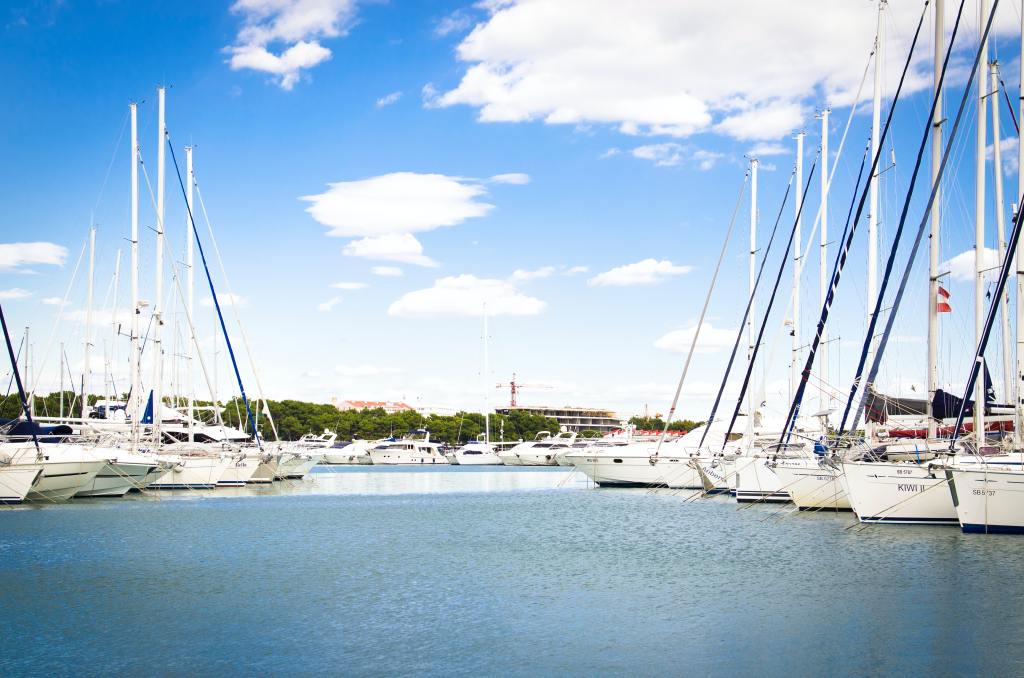Before you begin your voyage into the open sea, you need to be thorough with your checklist of safety equipment. You just can’t take your boat or yacht to the open waters without having the essential safety equipment on board.
Anyone can buy boats for sale, but not everyone has the proper knowledge about the responsibilities involved. Make sure you educate yourself and that all the passengers onboard are informed as well.

The equipment you need to carry on your boat in Australian waters varies according to:
- The type of vessel you are operating
- The type of waterway you are on
- Your proximity to the shore.
Essential Boat Safety Gear:
We will discuss some of the essential boat safety gear for enclosed as well as open waters. This list will help you in your expedition to ensure that you and your passengers are as safe and well prepared as possible.
Safety Gear for Enclosed Waters:
- Life jacket
Any voyage on water via boat is incomplete without life jackets. This safety equipment keeps you afloat in case of any emergency. They are easy to wear and won’t bother you during your favorite boating activities. For enclosed waters, you need a life jacket with Level 50S as they are specially made for enclosed waters. - Anchor and line or chain
We all know how important an anchor is for any water vessel, whether a small boat or a yacht purchased from a sale. The anchor size should match your vessel type and the water bed in your planned boat ride. For example, for a rocky sea bed, plow anchors are the best. According to your open or enclosed water adventure, the line or chain differs as well. - Sounds signal
When you are out in the waters, you might not come across any other vessels around. Even if you find one, the distance between the vessels makes it impossible to communicate. In emergencies, a sound signal such as a whistle, bell or horn comes in handy. They can assist you in your cry for help when facing an emergency, especially during times of low visibility. - Waterproof torch
Emergencies can strike you at any moment. And when your boat gets malfunctioned in the dark, you need a waterproof torch. So, buy a waterproof torch that can float. This safety gear can assist you in sending a signal or working on the engines. While at it, don’t forget to carry extra batteries and bulbs in case you need them. - Paddles and oars
If you have a boat that is under 6 meters long, then you need to keep paddles or oars on board. During an engine failure, paddles and oars can help you to steer your boat until you find any help. For a large vessel such as a yacht, you need to install some auxiliary power source to tackle any engine failure. - Bucket or bilge pump
This safety gear is common for open as well as enclosed water expeditions. Always make sure that you have a rubber, plastic or a metal bucket in handy. It can help you to stop a fire or remove excess water from the boat. A bilge pump, protected by a strainer, is necessary for all watercraft with covered bilges.
Safety Gear for Open Waters:
All the above-mentioned boat safety gears are also important for boats going on a voyage on open waters as well. The following is the list of boat safety gears for open waters.
- Life jacket – level 100 or greater
As discussed earlier, a life jacket is a must for any boating adventure. There are different types of life jackets for specific purposes. And life jacket of level 100 or greater is a must for any open water trips. This level of life jacket can protect its wearer against the harsh waves of the open sea. It can also keep on floating with zero effort from your end until the arrival of help. - Compass
Nowadays, all the boats are equipped with state-of-a-line GPS and digital compass. But, in case of any system malfunction, it can become obsolete. Thus, at any given point in time, your boat should have a normal mariners’ compass for directions. - Distress flare
Open waters can bring some uncertain challenges. Your boat could get stuck in a storm or you might have a major engine failure and system breakdown. A distress flare is the best way to give signals to the rescuers, as it can help them to locate you in the dark. - Map and chart
GPS and satellite navigation equipment have been great inventions as they’ve made sea voyages easier. But reliance on such digital means of direction can leave you stranded if it gets broken. Paper maps and charts of the open waters can save you from wandering in the sea without any direction. - V sheet
The V sheet is an orange-red coloured sheet with a big black ‘V’. It is one of the important distress signals that one can use while asking for help from nearby vessels. You can either lay it on the deck or fly it as a flag for informing others that you are in trouble and need some help.
Final Thoughts:
When you buy a boat from a boat dealer, they make sure that all the safety gear is there onboard. If for whatever reason they’re not, make sure you acquire them all before setting off on your first expedition.

